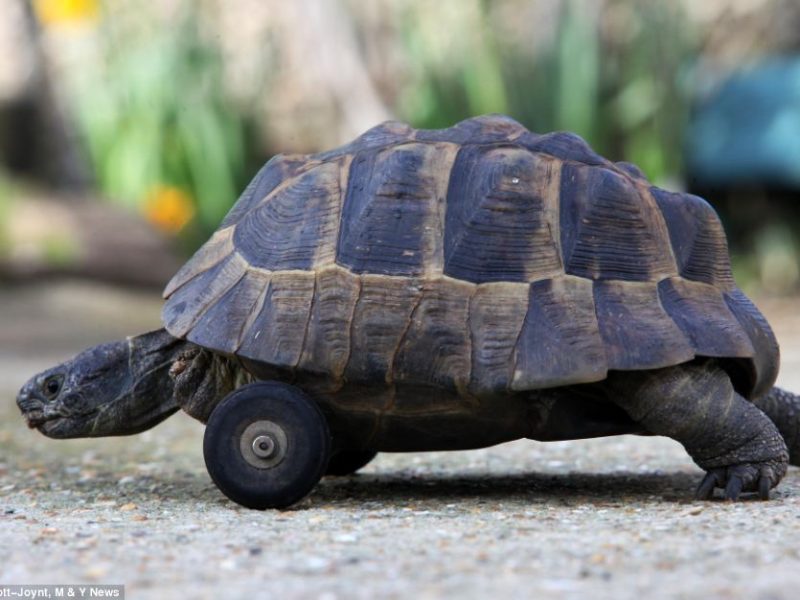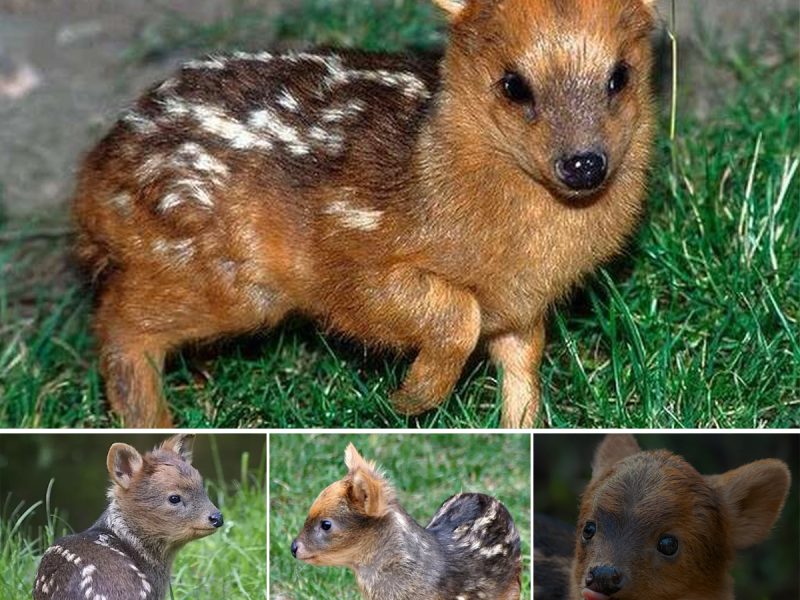Observing birds in nature is not such an easy task, as we can hardly find their nests, and they are always in motion, which greatly reduces our observation time. So, you can already get an idea that, if bird watching is not so easy, taking a picture is even more difficult. Just thinking about angles, light, shadow, etc., gives you an idea that this is a job that requires a lot of observation and patience.
1 / 24
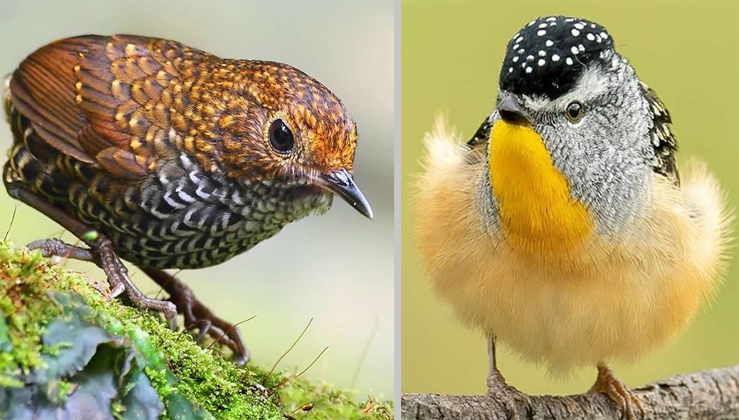
And that’s exactly why some photographers are dedicated solely to this task and some photos are extremely surreal – not to mention the bird itself, which seems to have come straight from fairy tales. Most bird watchers and scientists claim that there are about 9,000 to 10,000 species of birds and one of the main ways to identify them is through their appearance, along with the colors they have. And today we brought you 23 birds so perfect they don’t even look real – check it out and vote for your favorite bird.
2 / 24
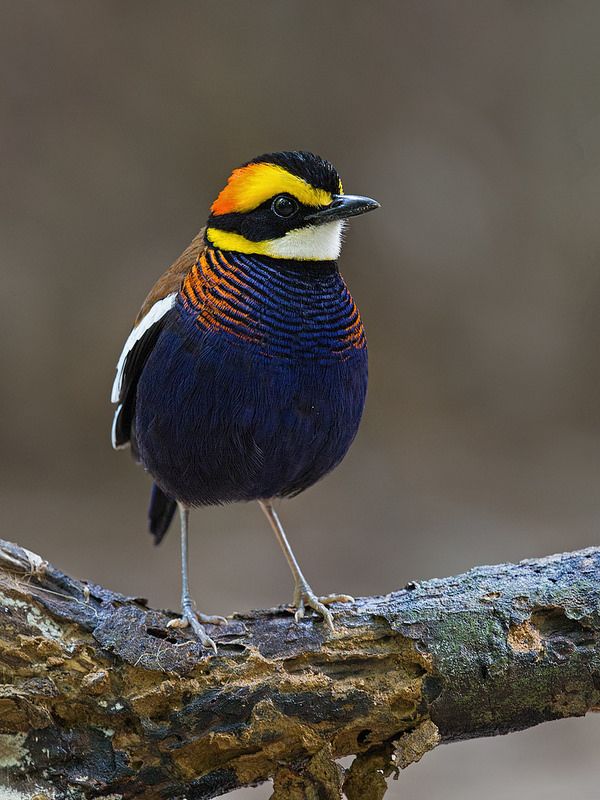
Malayan Banded Pitta (Hydrornis irena): The banded pittas, Hydrornis (guajana) spp., are a group of birds in the Pittidae family that were formerly lumped as a single species, the Banded Pitta. They are found in forest in the Thai-Malay Peninsula and the Greater Sundas. This recently split species is listed as Near Threatened on the basis that the continued destruction of its habitats and capture for the illegal bird trade are suspected to be driving a moderately rapid decline in its population. Further research is required into the impact of these threats, the results of which could influence its Red List status.
3 / 24
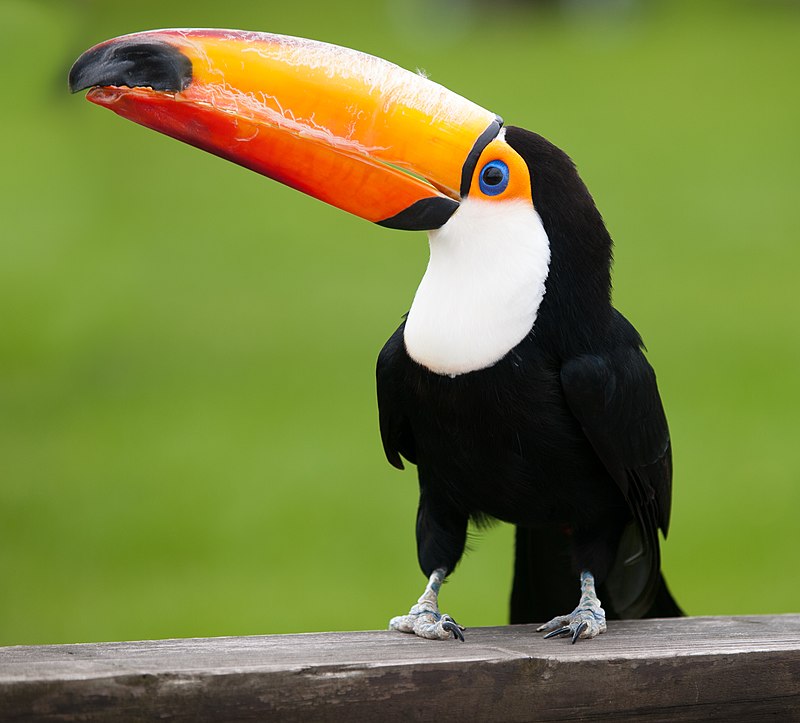
Green Billed Toucan: The green-billed toucan, or red-breasted toucan, is a near-passerine bird in the family Ramphastidae found in southern and eastern Brazil, Pantanal of Bolivia, eastern Paraguay and far north-eastern Argentina. It is primarily found in the Atlantic Forest. Overall, it is fairly common, and therefore considered to be of least concern by IUCN.
4 / 24
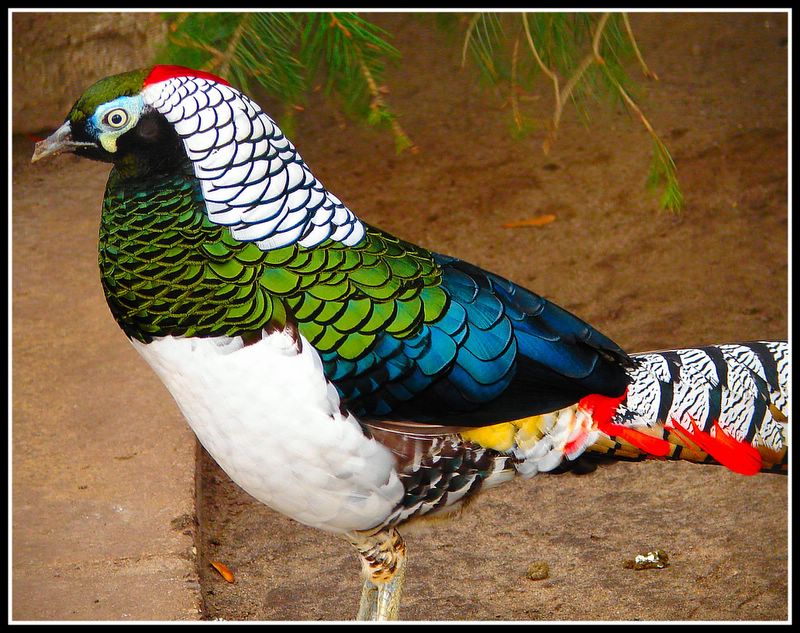
Lady Pheasant: The Lady Amherst’s Pheasant, Chrysolophus amherstiae is a gamebird of the order Galliformes and the family Phasianidae. These are native to south western China and Myanmar, but have been introduced elsewhere, and have established a self-supporting, but now declining, feral population in England the stronghold of which is now in Bedfordshire. The adult male is 100-120 cm in length, its tail accounting for 80 cm of the total length. It is unmistakable with its black and silver head, long grey tail and rump, and red, blue, white and yellow body plumage. The “cape” can be raised in display. This species is closely related to the Golden Pheasant and the introduced populations in England will interbreed. The female is much less showy, with a duller mottled brown plumage all over, similar to that of the female Common Pheasant but with finer barring. She is very like the female Golden Pheasant, but has a darker head and cleaner underparts than the hen of that species. The name commemorates Sarah Countess Amherst, wife of William Pitt Amherst, Governor General of Bengal, who was responsible for sending the first specimen of the bird to London in 1828.
5 / 24
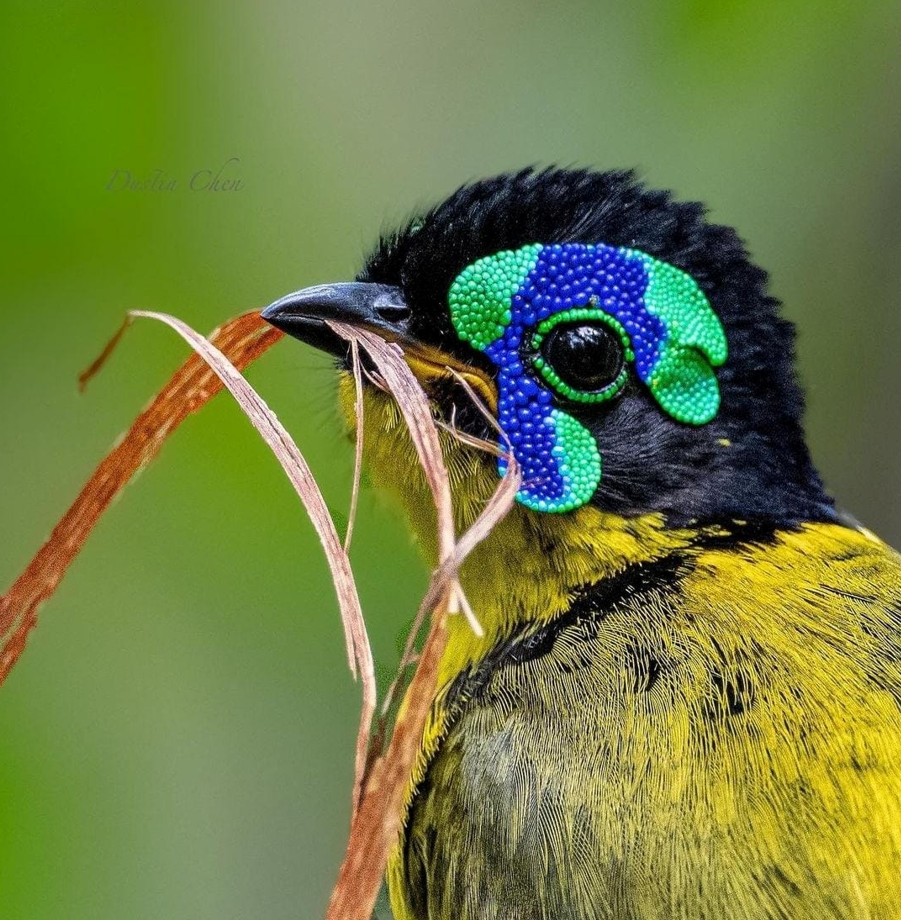
Schlegel’s Asity (Philepitta schlegeli): The Schlegel’s Asity is endemic to Madagascar. It occurs in the north-west where it is common, but it is more patchily distributed along the west coast. It frequents both evergreen humid forest in NW and dry deciduous forests in W. It feeds on small fruits and nectar depending on the season. It typically nests in suspended globular structure. The population is declining due to habitat destruction. The Schlegel’s Asity is currently listed as Near Threatened.
6 / 24
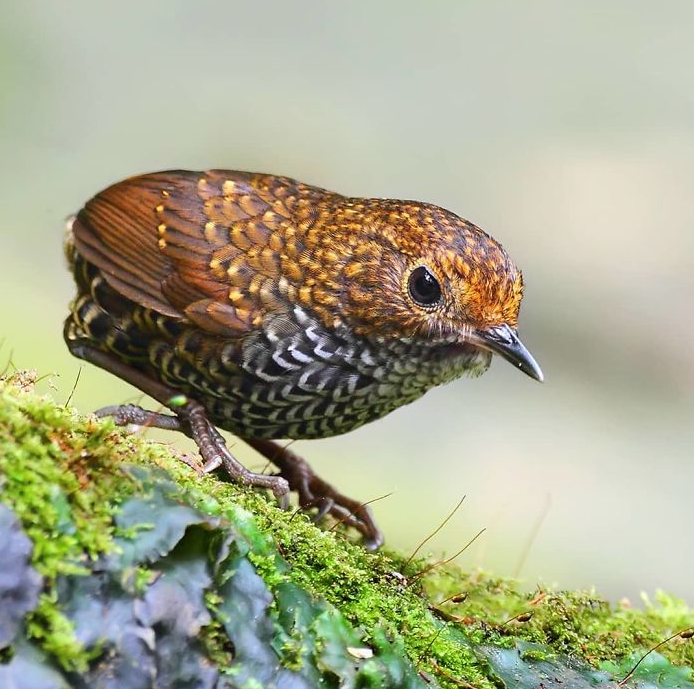
Pnoepyga pusilla: The Pygmy Wren-babbler (Pnoepyga pusilla) is a species of bird in the Timaliidae family. It is found in Bangladesh, Bhutan, Cambodia, China, India, Indonesia, Laos, Malaysia, Myanmar, Nepal, Thailand, and Vietnam. Its natural habitats are subtropical or tropical moist lowland forests and subtropical or tropical moist montane forests.
7 / 24
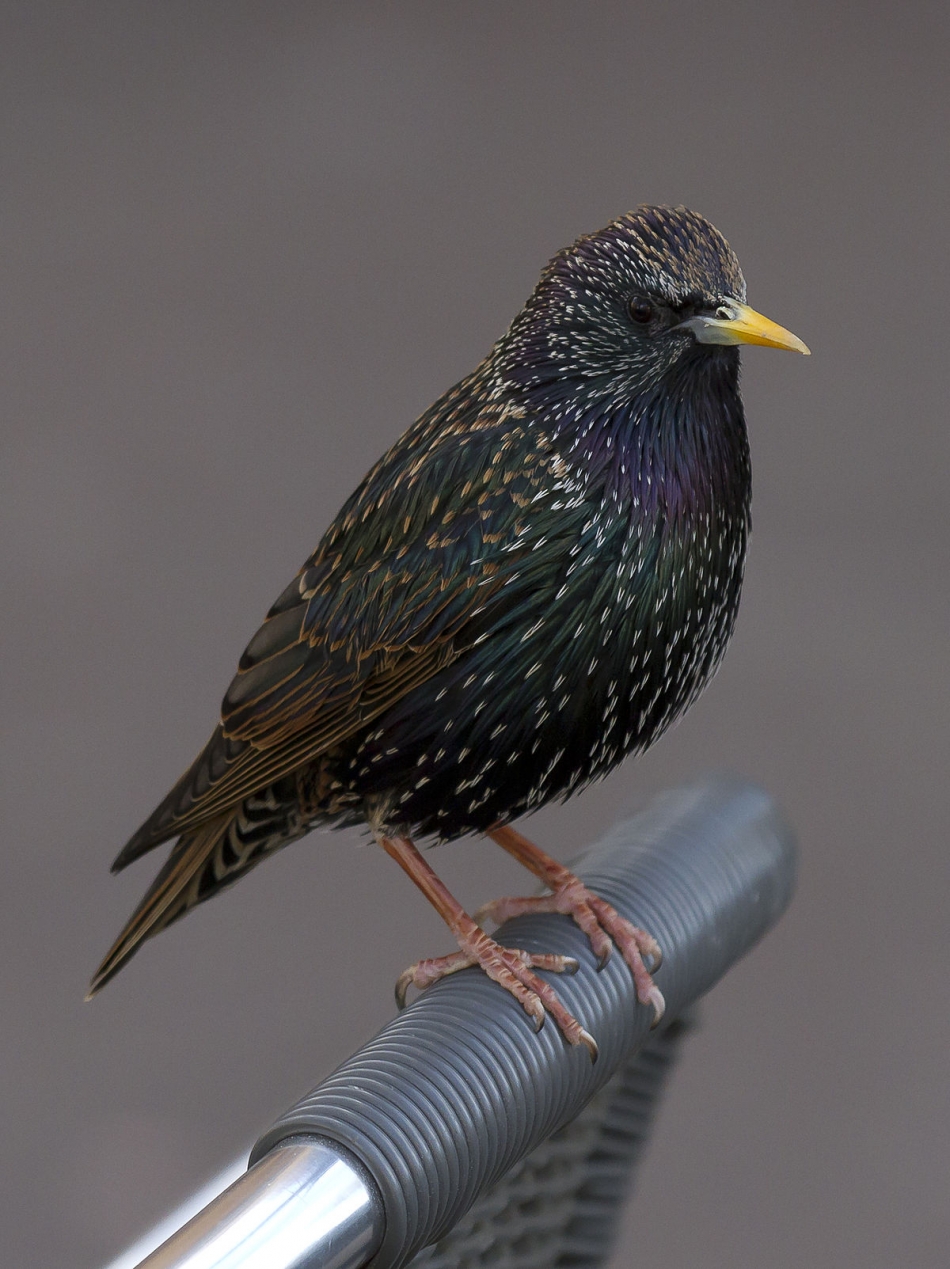
European Starling (Sturnus vulgaris): One of the most numerous birds in North America, the starling is a fierce competitor for nesting sites. They are responsible for the decline in native cavity nesting birds such as sapsuckers and they often compete for nesting sites with woodpeckers. Nests are filled with grass or pine needles and other things such as feathers, paper, plastic, string and roots. They are formed 2-60 feet above the ground.Starlings commonly nest in man made structures between rafters in barns and open warehouses as well as behind signs and in the attics of houses. Buildings that hold nests may contain tens of thousands of roosting birds. The nests of starlings are a source of household pests such as fleas, ticks, bed bugs and carpet beetles, all of which have been known to invade buildings.
8 / 24
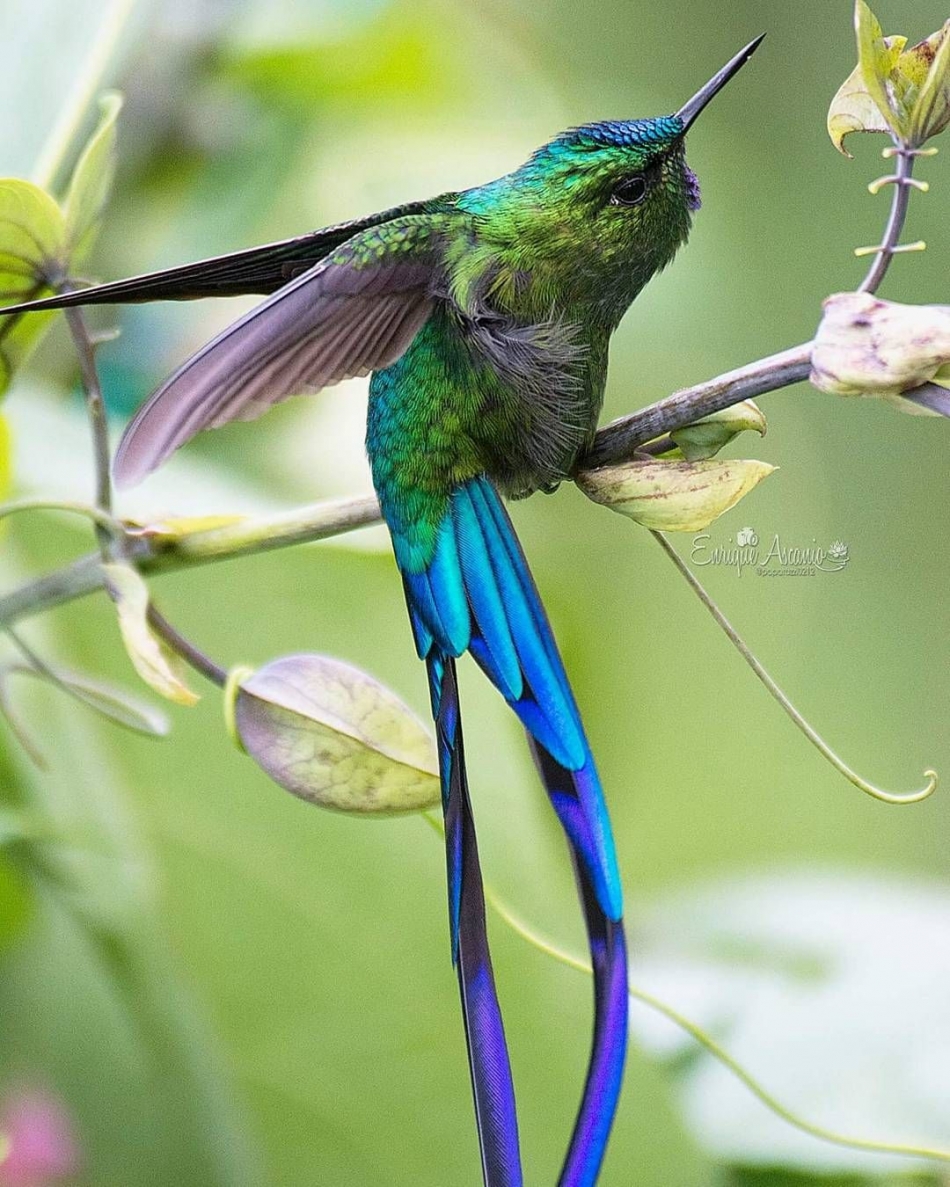
Violet-tailed Sylph (Aglaiocercus coelestis): Violet-tailed Sylph is a bird which belongs to the family of Trochilidae and the order of Apodiformes. It is a very showy hummingbird because of its long iridescent violet tail. It is found in Colombia and Ecuador. The male is dark green on top with iridescent green crown and a small white eye spot. Its tail is very long and forked of metallic violet color with bright blue tips and almost twice as long as its body with the external feathers longer than the others. It has an iridescent violet spot on its throat, its rump and uppertail coverings are blue and its opaque copper-green belly with the underflow coverings of green or rufous-green color. The female has a much shorter tail than the male, is green on top with iridescent blue crown and bluish rump. It has a white throat spotted with green, an anteated white breast and cinnamon flanks.
9 / 24
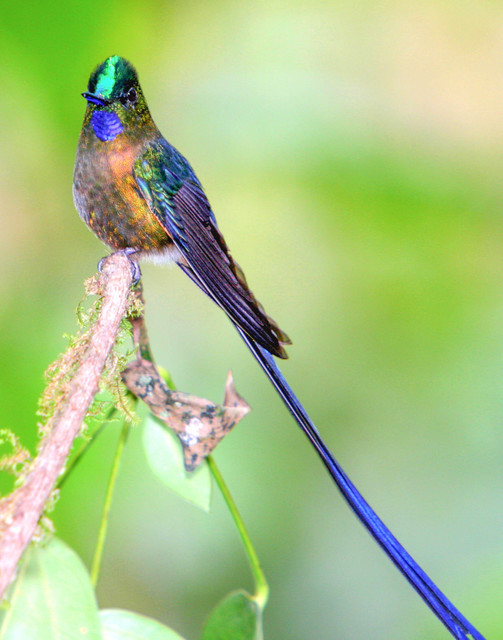
This species is endemic to Choco and is found from the headwaters of the San Juan river in Colombia to the southwest of Ecuador. In Colombia it is located on the western slope of the Western Cordillera from 300 to 2100 m above sea level from the San Juan River to the south. It is a common inhabitant in the rainforest of the peaceful slope where it is commonly found on the edges. Males forage mainly in the subdosel and ground vegetation, while females are mainly concentrated in the understory. It feeds on the nectar of flowers, especially those of short corolla and tubular.
10 / 24
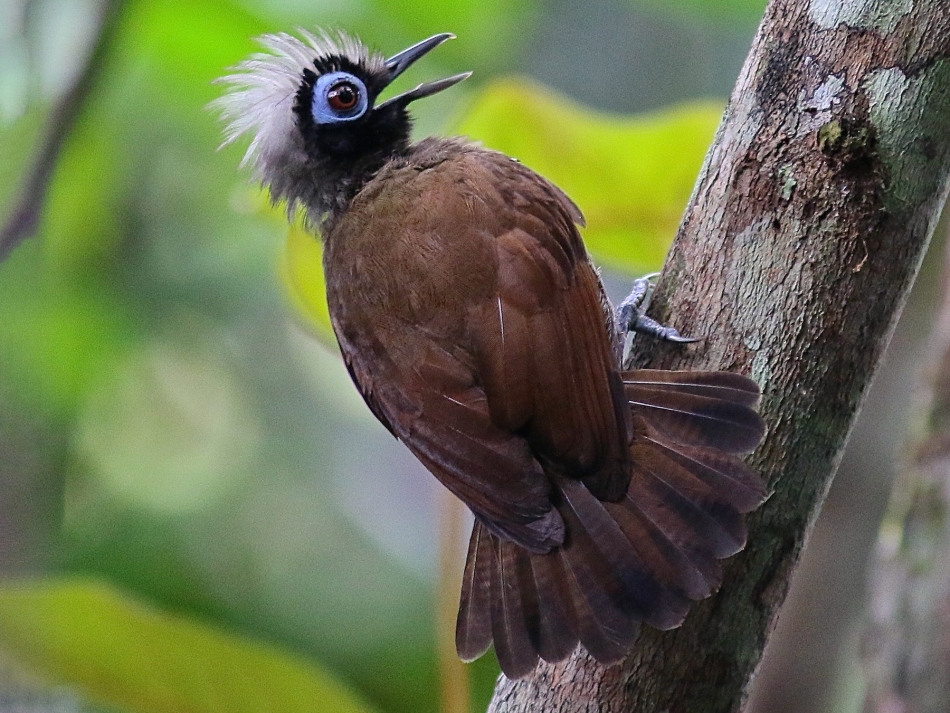
Hairy-crested Antbird (Rhegmatorhina melanosticta): Striking ant-following antbird. Chestnut brown, with a black face, ornate white eyering, and white or reddish-brown bushy crest. Usually forages in pairs or family groups around army ant swarms in mature rainforest; listen for its loud snarling calls to key in to these army ant swarms. Its song is a decelerating-accelerating series of high, wheezy whistles.
11 / 24
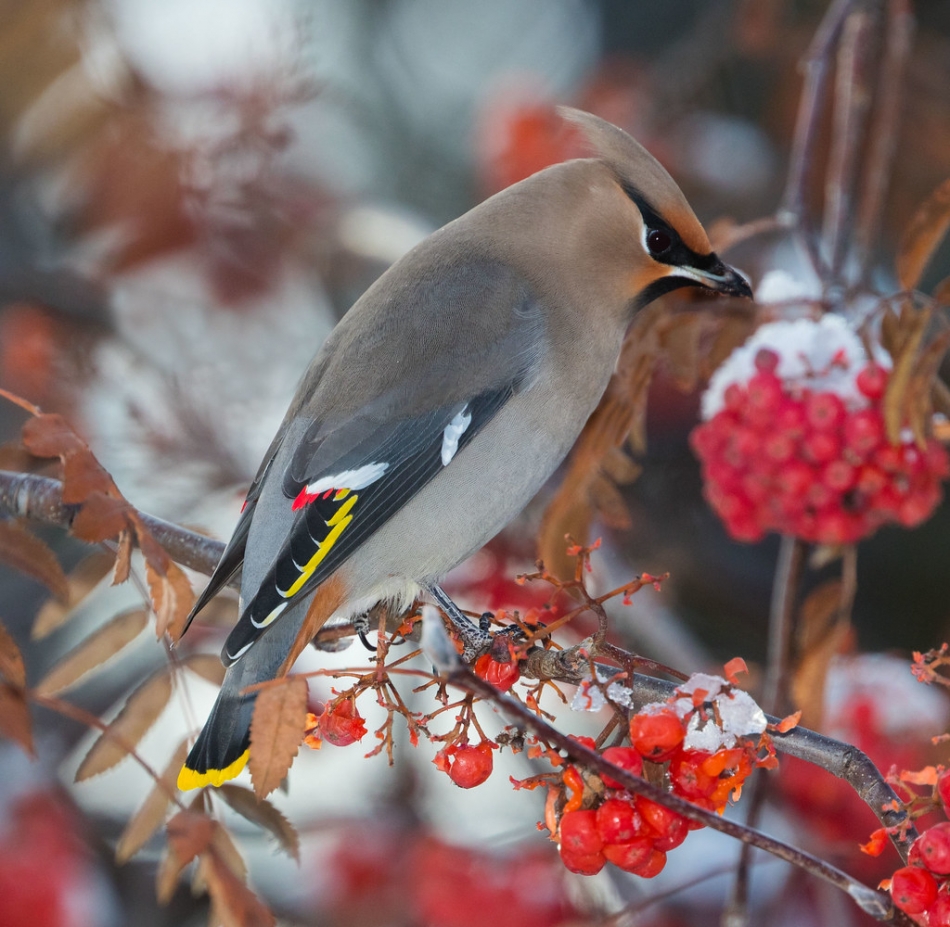
Bohemian Waxwing (bombycilla garrulus): Waxwings are starling-sized, stout-bodied, short-legged birds with an upstanding, pointed crest. They have black throats, black wings with white, yellow and waxy red markings and yellow-tipped tails. Just one species breeds in Europe and visits the UK erratically in winter during ‘irruption years’. Bohemian Waxwings communicate with high-pitched calls as they roam around in large groups looking for fruit. Only three species of waxwings exist in the world, the Bohemian Waxwing of North America and Eurasia, the Cedar Waxwing of North America, and the Japanese Waxwing of eastern Asia.
12 / 24
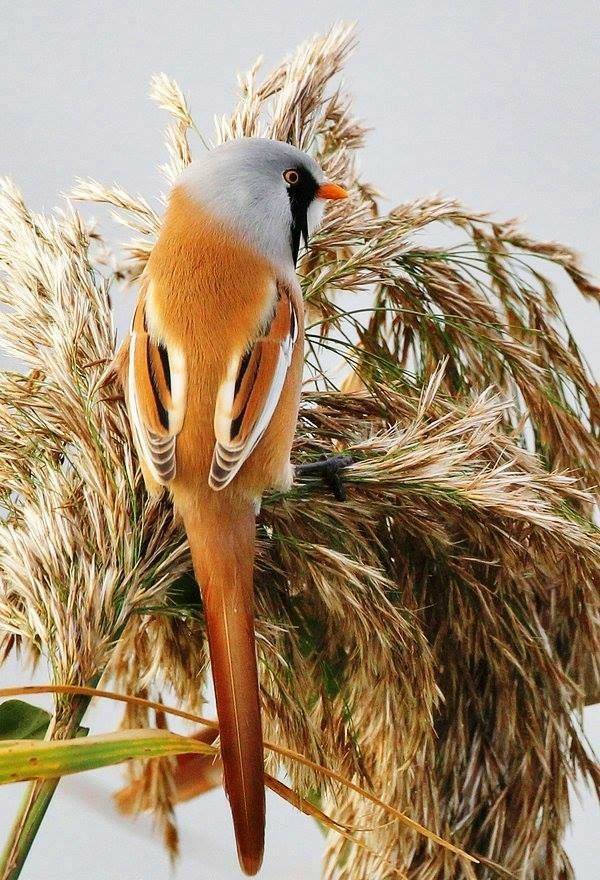
Panurus biarmicus: The bearded reedling (Panurus biarmicus (Linnaeus, 1758)), is a passerine bird belonging to the Panuridae family. The bearded reedling is a small bird widespread in Europe, Asia and North Africa with somewhat fragmented ranges. In Italy it nests mainly in coastal areas and is also present as a migrant and winter visitor. Its habitat is represented by marshy and tree-rich localities where it nests in the thick of the branches, especially reeds.
13 / 24
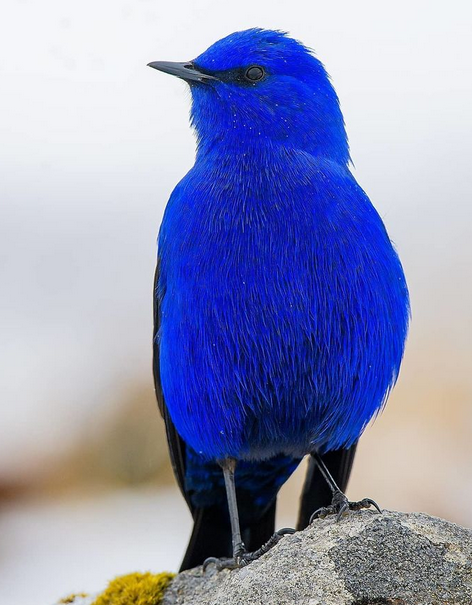
Grandala Coelicolor: The grandala (Grandala coelicolor) is a species of bird in the thrush family Turdidae. It is the only species placed in the genus Grandala. The Grandala birds bond as a flock, and when they see a lonely bird, the whole flock will go and recruit them to the team. Often seen swirling in flocks above mountain passes, scrubby alpine forests, and highland meadows, this large thrush is unlike any other. Adult male is a deep, almost eye-searing blue with jet-black wings. Females and immatures are brown with white streaks all over the head and underparts and weak white bars on the wings. Long-billed and sharp-winged profile, along with flocking behavior, is more reminiscent of starlings than thrushes.
14 / 24
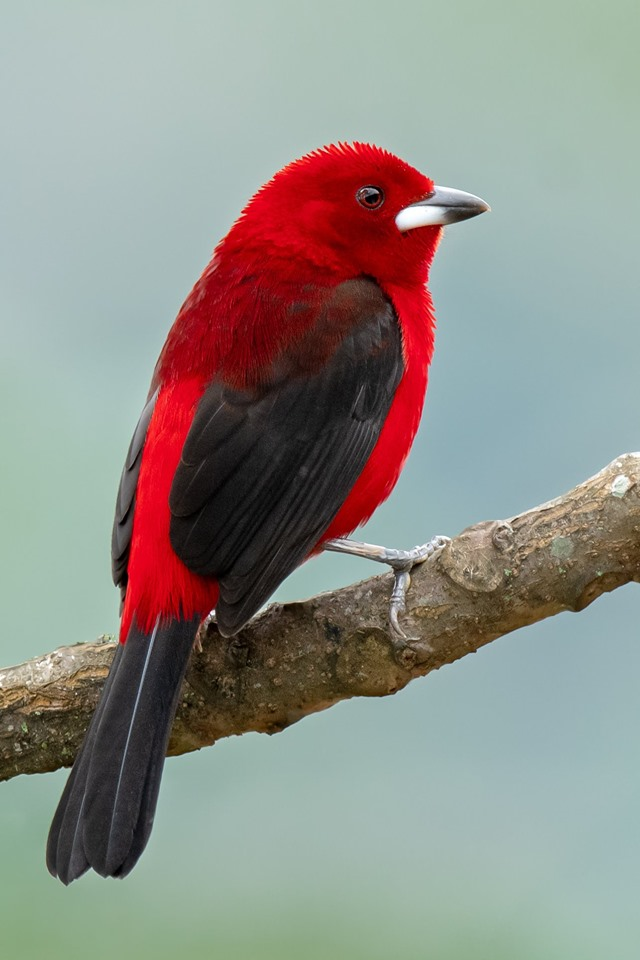
Brazilian Tanager (Ramphocelus bresilius): The male Brazilian Tanager is a very intense red. The male also has bright white patches on its lower bill which is otherwise black, and dark wings and tail. The female (below) is brown with a buff underside and red patch on rump and dark bill. The immature male (see further below) is like the female but with bright patches of red, especially on face, and white patch on black bill. The female has no streaking on its chest, unlike the female Ruby-crowned Tanager. The former is also darker above than the latter. Both male and female Brazilian Tanagers have a slight overbite, where the upper bill is a bit longer than the lower. The Brazilian Tanager is endemic to the southeast coast of Brazil, where it is fairly easy to find, and very easy to spot.
15 / 24
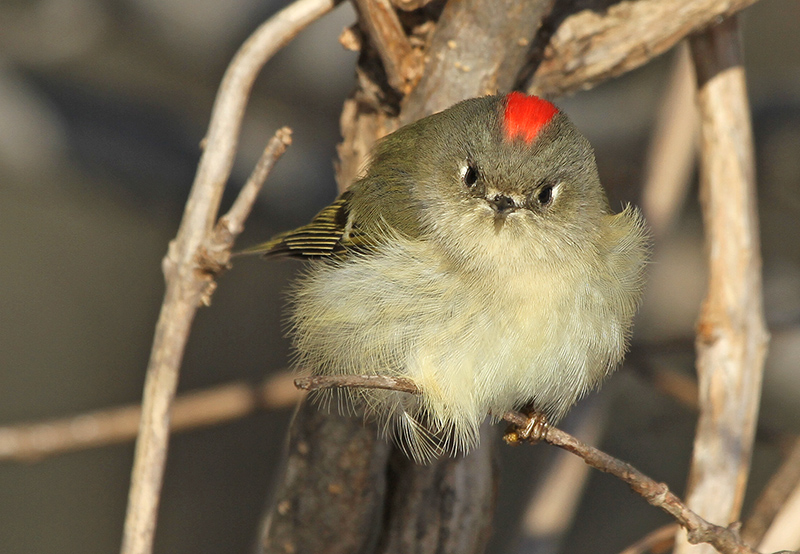
Ruby-crowned Kinglet (Corthylio calendula): The ruby-crowned kinglet (Corthylio calendula) is a very small passerine bird found throughout North America. It is a member of the kinglet family. The bird has olive-green plumage with two white wing bars and a white eye-ring. Males have a red crown patch, which is usually concealed. Ruby-crowned Kinglets are fast-moving but quiet little birds that you might overlook at first. If you’re scanning roadside bushes or watching a flock of warblers, you might see one dart into view and keep moving through the foliage, almost too fast for you to keep up. Keep an eye out for their characteristic habit of wing-flicking. Don’t rely on seeing this bird’s ruby crown—it’s often kept completely hidden. But do listen for both the male’s loud song (often given during migration as well as in the breeding season) and for the double-noted call, which can be distinctive once you learn it.
16 / 24
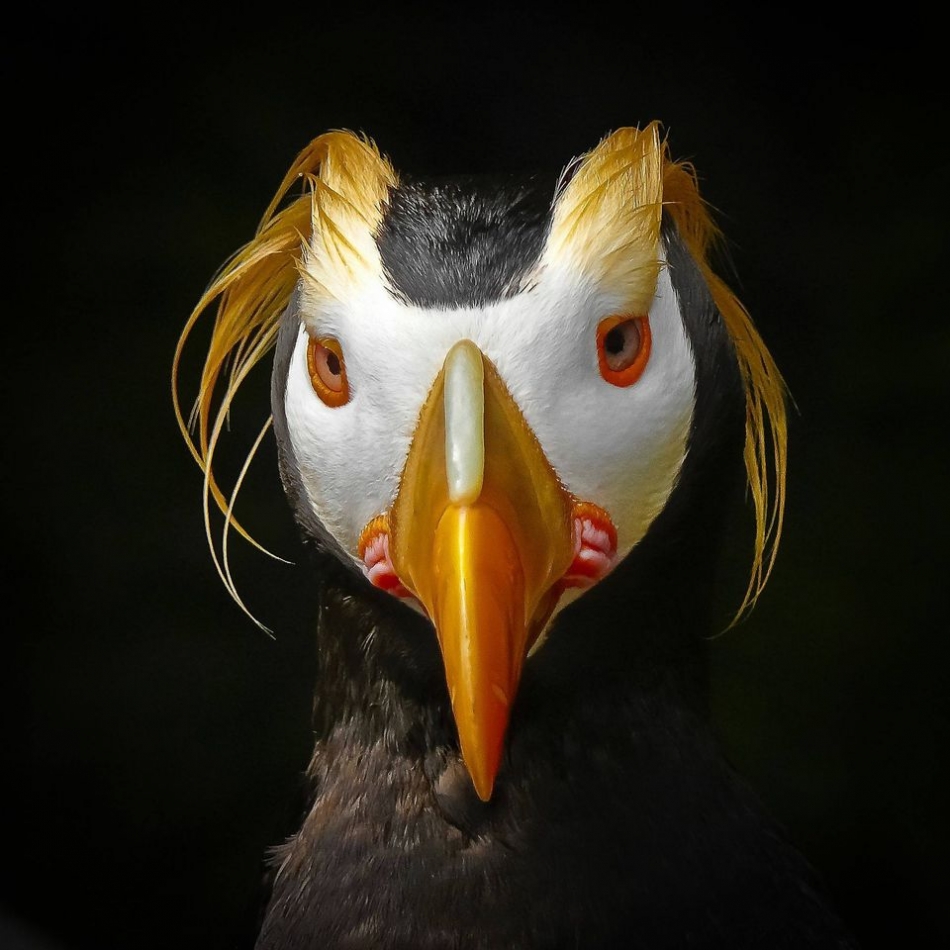
Tufted Puffin (Fratercula cirrhata): Tufted Puffins dress up for breeding season with impressively long, pale yellow head plumes. Red-rimmed eyes and an immense red bill offset a bright white face. In the nonbreeding season, they have a gray face, only a hint of plumes, and an orange-and-gray bill. Most of the year they live at sea, from subtropical Pacific waters up to the Arctic Ocean. Young birds may live entirely on the open ocean, returning to land only when they are 3 years old to breed on the nesting cliff where they hatched.
17 / 24
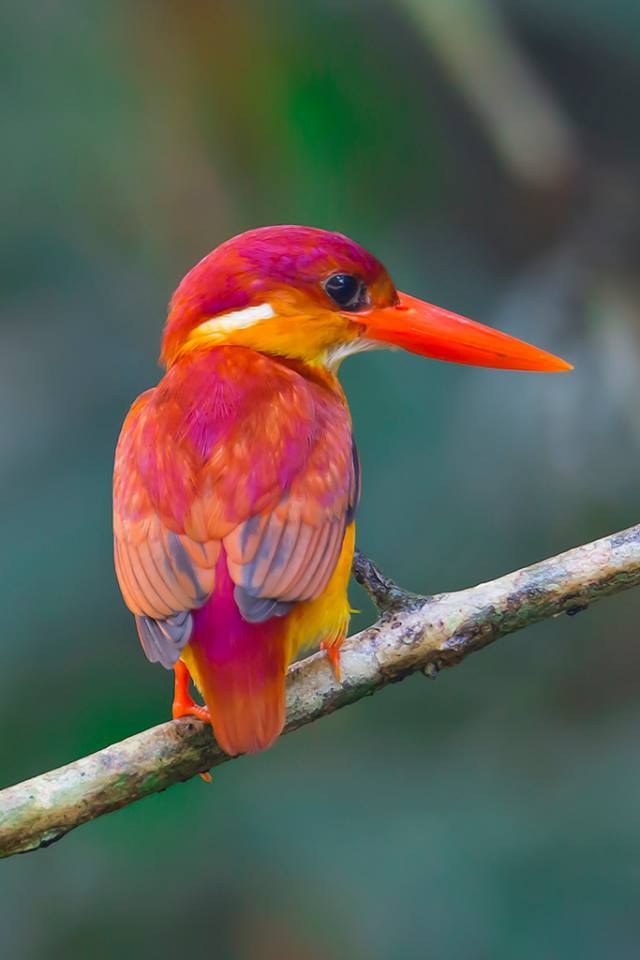
Rufous-backed Kingfisher (Ceyx rufidorsa): The Rufous-backed Kingfisher (Ceyx rufidorsa) is a species of bird in the Alcedinidae family. It is found in Brunei, India, Indonesia, Malaysia, the Philippines, and Thailand in tropical lowland forests near lakeshores and streamsides. The small bird is solitary and hunts from a low perch over the water by diving for insects and frogs. It is sometimes considered a subspecies of the Oriental Dwarf Kingfisher.
18 / 24
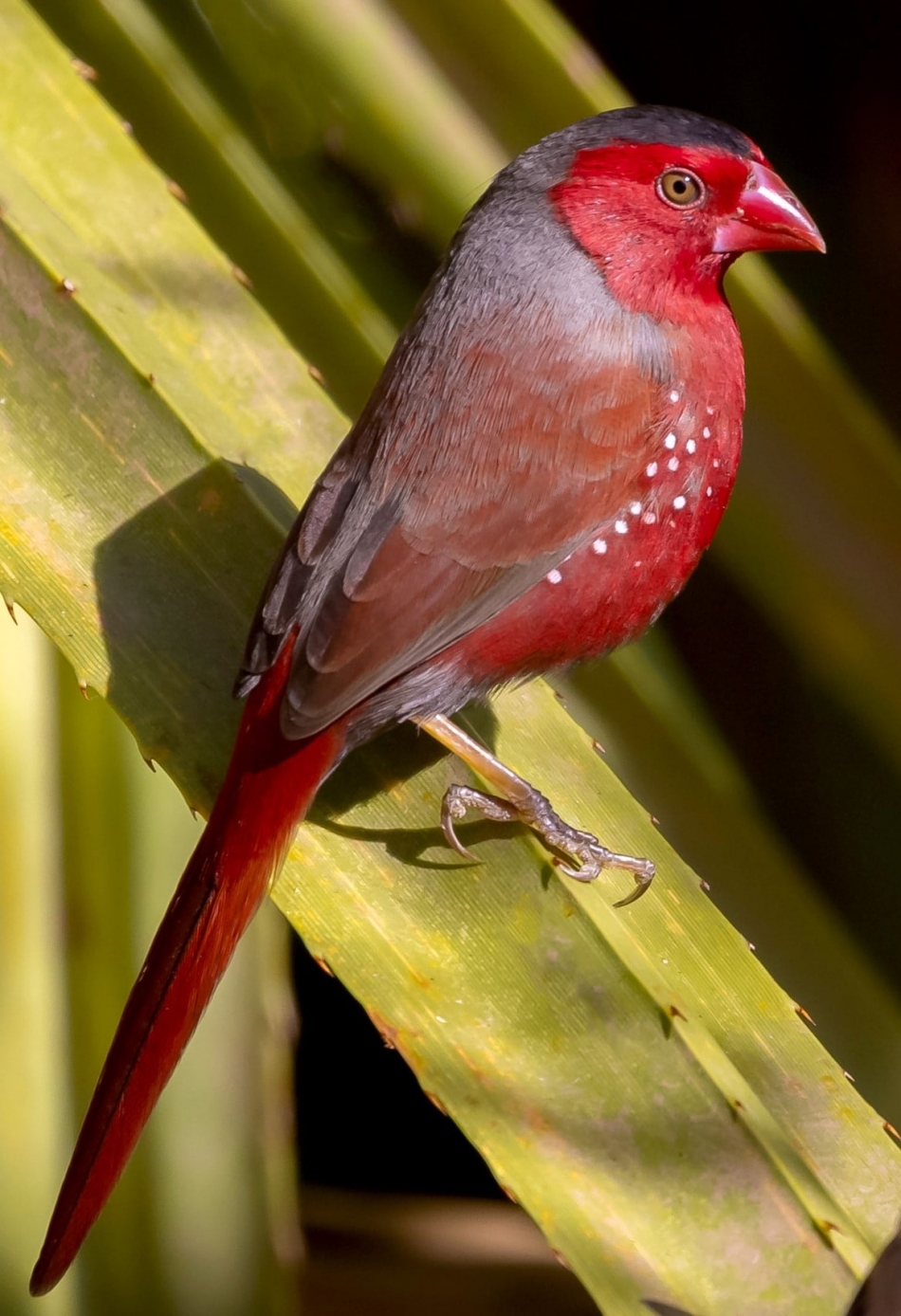
Black-bellied Crimson Finch (Neochmia phaeton): This species has a very large range, and hence does not approach the thresholds for Vulnerable under the range size criterion (Extent of Occurrence 30% decline over ten years or three generations). The population size has not been quantified, but it is not believed to approach the thresholds for Vulnerable under the population size criterion (10% in ten years or three generations, or with a specified population structure). For these reasons the species is evaluated as Least Concern.
19 / 24
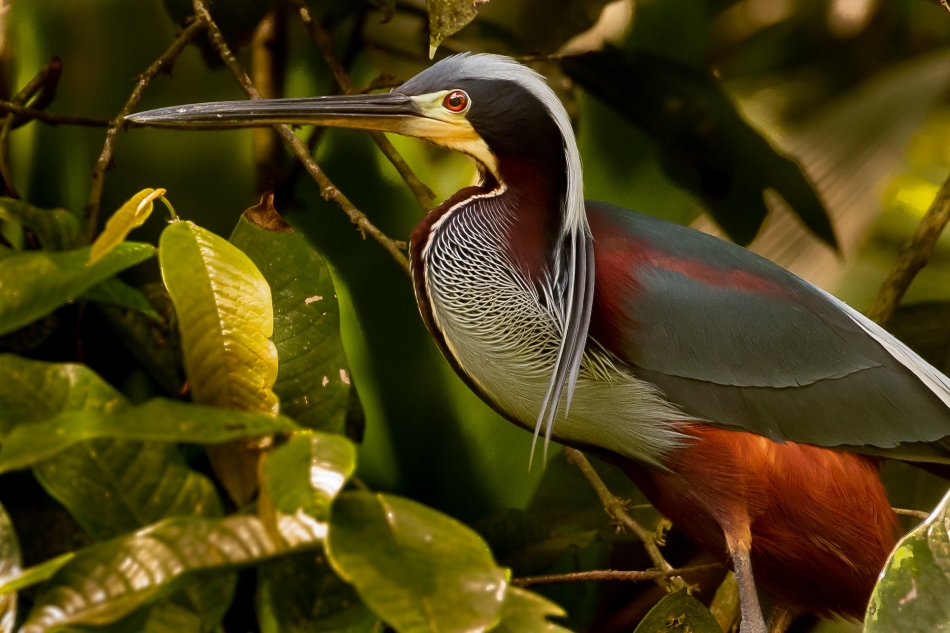
Agami Heron (Agamia agami): This species occurs in swampy stream and lake margins within tropical forest, and also in seasonal marshes. It tends to remain in lowlands under 300 m in elevation, but has been recorded at 2,600 m in Colombia’s east Andes. Fish are its primary food source, with cichlids (Aequidens) and characins (Triportheus, Astyanax) recorded as prey. The breeding season appears to coincide with the arrival of rains; nest building occurs between June and September in both Costa Rica and Venezuela. The species is semicolonial. Nests are built in a tree or bush 1-3 m above water.
20 / 24
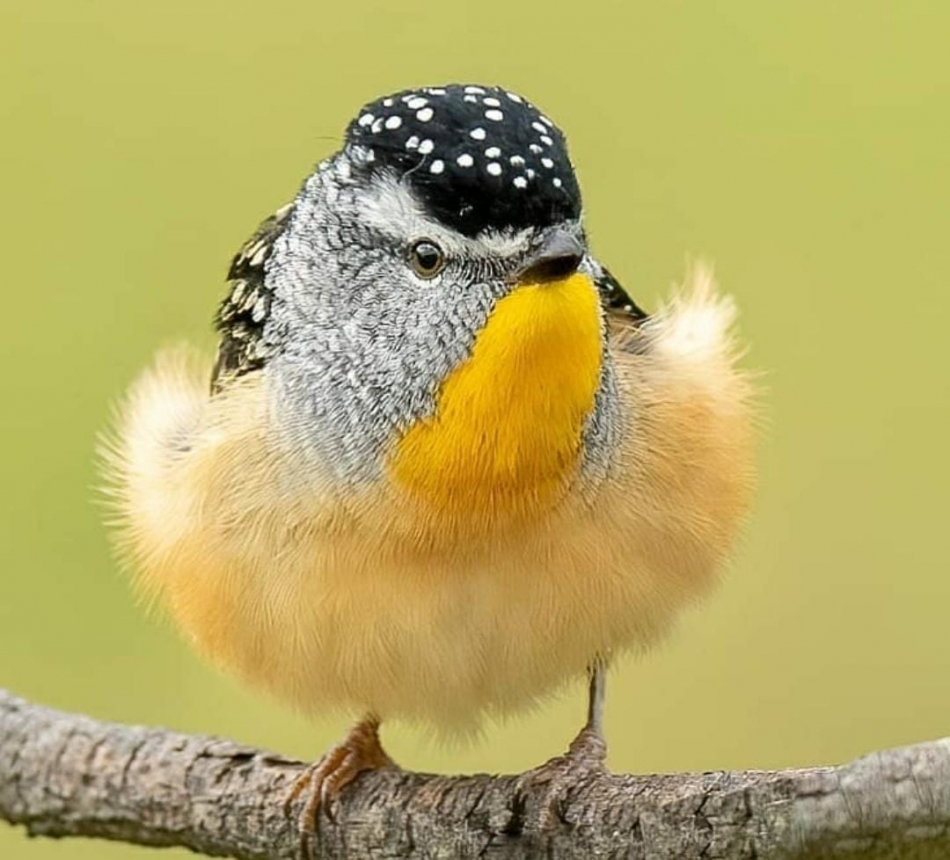
Spotted Pardalote (Pardalotus punctatus): Tiny colorful bird with short stubby bill, bright red patch on rump, and entirely white eyebrow. Note that the very front of the eyebrow is white (compare Striated Pardalote). Upperparts, including crown, primarily black covered in white spots. Plumage has minor variations across range. In some locations has yellow throat and/or rump. Voice is a very clear and repetitive double “ding”. Very common in woodlands and eucalypt forest within its range, which covers most of Australia. Makes small nest burrows in soil banks.
21 / 24
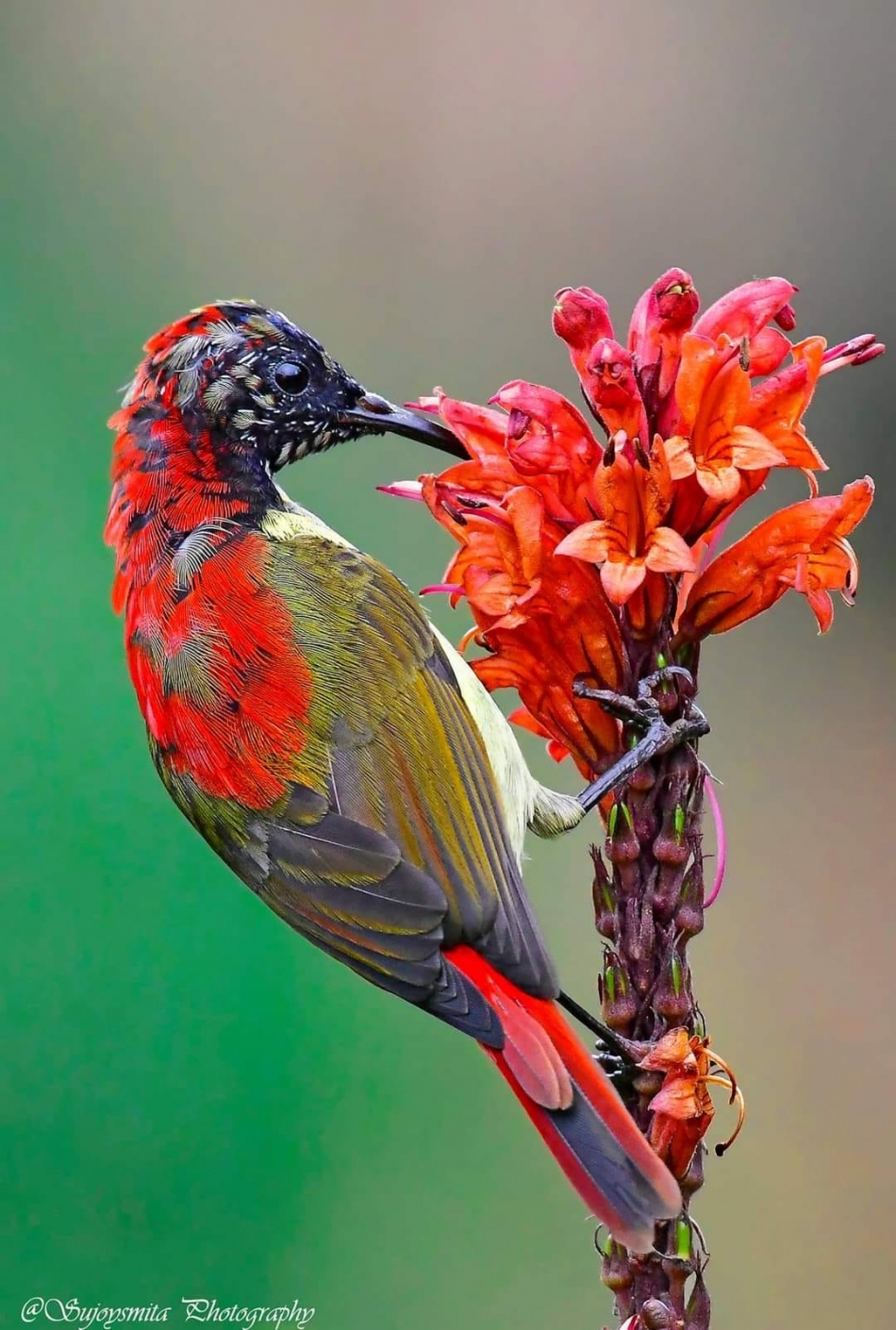
Fire-tailed Sunbird (Aethopyga ignicauda): This species has a very large range, and hence does not approach the thresholds for Vulnerable under the range size criterion (Extent of Occurrence 30% decline over ten years or three generations). The population size has not been quantified, but it is not believed to approach the thresholds for Vulnerable under the population size criterion (10% in ten years or three generations, or with a specified population structure). For these reasons the species is evaluated as Least Concern.
22 / 24
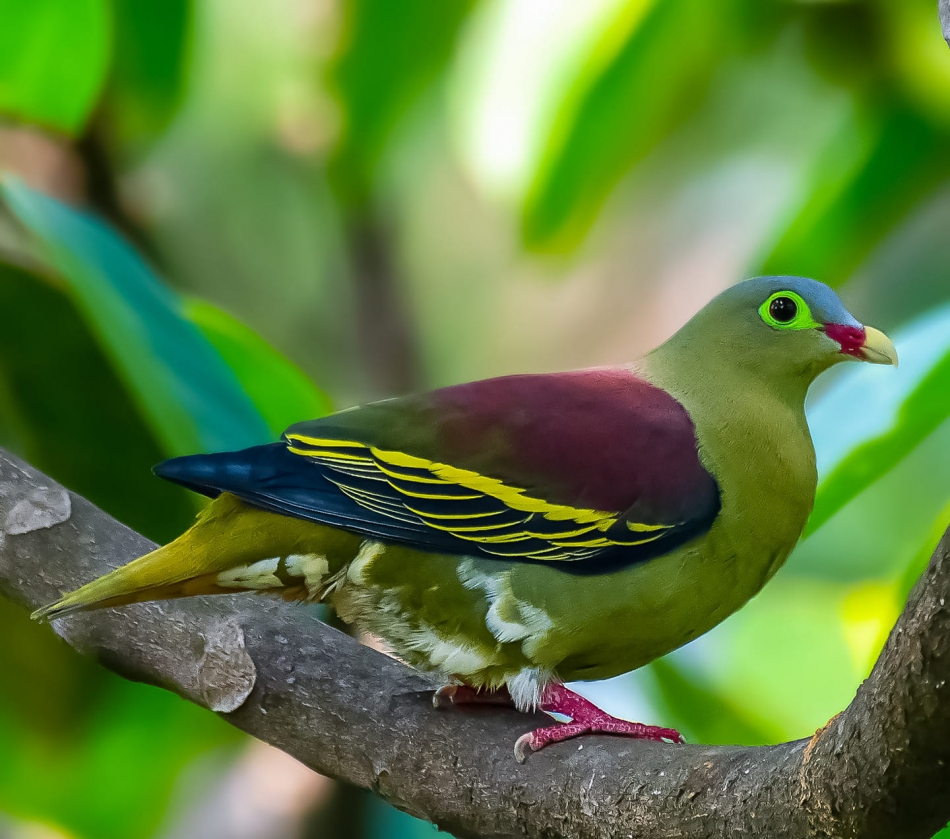
Thick-billed Green Pigeon (Treron curvirostra): The thick-billed green pigeon (Treron curvirostra) is a species of bird in the family Columbidae. Brightly-colored and thickset pigeon of the forest canopy, usually seen flying over in pairs or small groups. Distinctive bicolored bill and bright green eyering are visible even from a distance. Both sexes are mostly green. Males have maroon backs, while females are green all over; both have jagged bright yellow striping on the wing edges. Flocks are seen in fruiting trees in lowland and foothill forests, where they often associate with other green pigeons. Gives smoothly undulating “woooOOOO”, often in series.
23 / 24
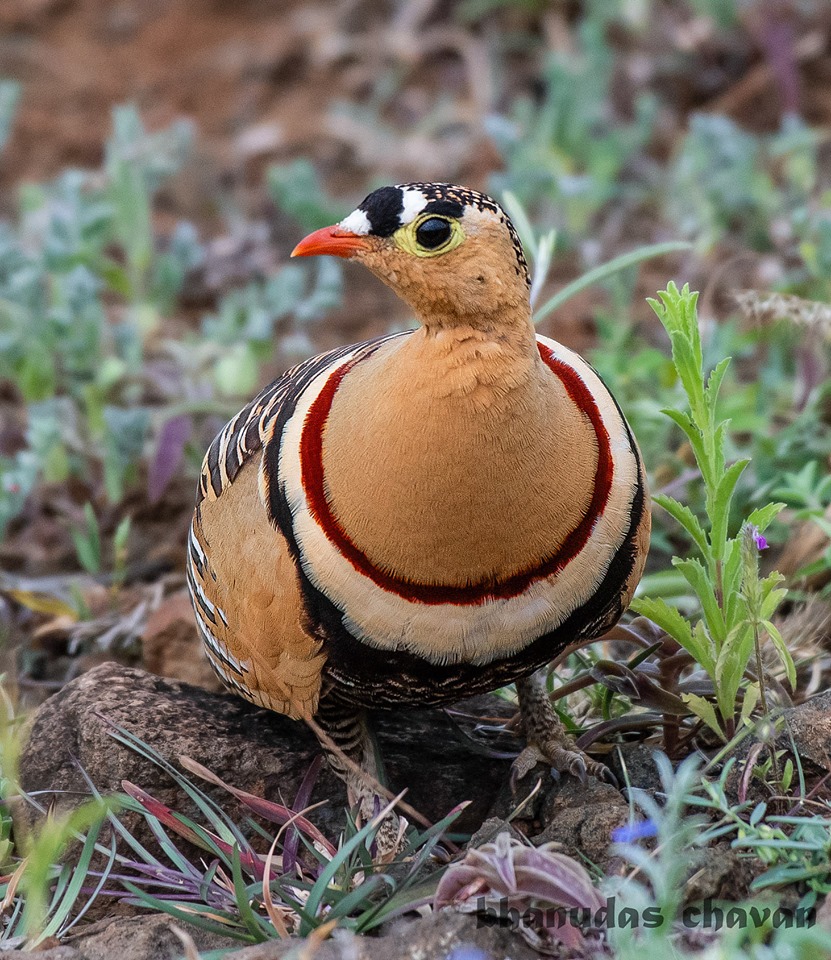
Painted Sandgrouse (Pterocles indicus): This beautifully-patterned bird looks like a cross between a dove and a pheasant. Male is warm sandy-brown with bold brown, black, and white stripes. Female is much more densely and intricately striped all over her body. A species of inland plains, plateaus, and other open areas. Flocks to water after dusk, often giving bubbling clicks while doing so.
24 / 24
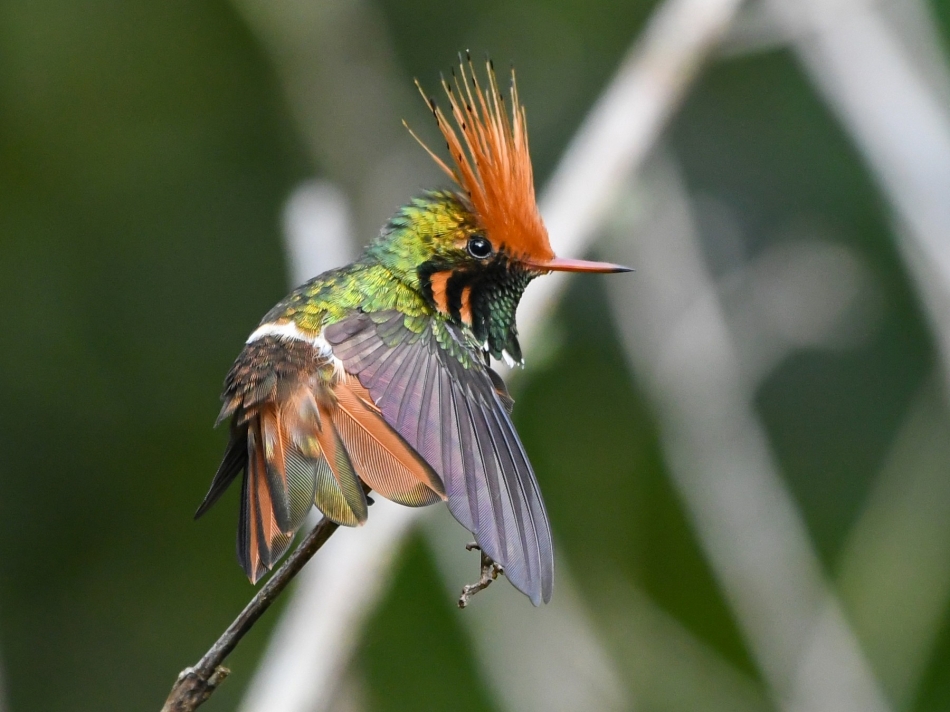
Rufous-crested Coquette (Lophornis delattrei): This species has an extremely large range, and hence does not approach the thresholds for Vulnerable under the range size criterion (Extent of Occurrence 30% decline over ten years or three generations). The population size is very large, and hence does not approach the thresholds for Vulnerable under the population size criterion (10% in ten years or three generations, or with a specified population structure). For these reasons the species is evaluated as Least Concern.
